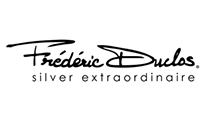How to Buy a Diamond
Here’s What to Look for to Get the Most for Your Investment.
The American Gem Society (AGS) Diamond Grading Standards evaluate three of the four value factors—cut, color and clarity—on its own 0-10 scale. The scales begin at 0 (zero), the highest grade, and goes to 10, the lowest. These three factors are expressed separately along with the fourth factor, the carat weight of the stone, for the final AGS Grade. Obviously, the lower the grade, the better the diamond.
Cut
How well a diamond manipulates light depends on the accuracy and quality of its cut. This is the first and most important factor to consider when purchasing a diamond. The AGS Cut Grading System considers not only the proportions of a diamond, but also the craftsmanship of its overall symmetry and polish.
Color
The AGS grading system for color begins with a graduated scale that ranges from “colorless”—the absolute highest standard—to light yellow. While subtle variances in color can make a significant difference in the value of a diamond, it doesn’t necessarily decrease it’s beauty, especially if a stone is well cut.
Clarity
Clarity refers to the evaluation of a diamond’s internal and external flaws. The AGS grade begins at zero for a flawless diamond and goes down from there based on the number and location of inclusions and/or surface blemishes.
Carat Weight
The fourth C is carat weight, the standard usually used to measure diamonds. A carat equals 1/5 of a gram (or 1/142 of an ounce), each carat is further divided into points, each point representing 1/100th of a carat. Remember, when it comes to size, bigger is not always better. In fact, weight may be the least important of the four C's in determining a diamond’s value.
Click here for more detailed information on AGS diamond standards.
The American Gem Society (AGS) Diamond Grading Standards evaluate three of the four value factors—cut, color and clarity—on its own 0-10 scale. The scales begin at 0 (zero), the highest grade, and goes to 10, the lowest. These three factors are expressed separately along with the fourth factor, the carat weight of the stone, for the final AGS Grade. Obviously, the lower the grade, the better the diamond.
Cut
How well a diamond manipulates light depends on the accuracy and quality of its cut. This is the first and most important factor to consider when purchasing a diamond. The AGS Cut Grading System considers not only the proportions of a diamond, but also the craftsmanship of its overall symmetry and polish.
Color
The AGS grading system for color begins with a graduated scale that ranges from “colorless”—the absolute highest standard—to light yellow. While subtle variances in color can make a significant difference in the value of a diamond, it doesn’t necessarily decrease it’s beauty, especially if a stone is well cut.
Clarity
Clarity refers to the evaluation of a diamond’s internal and external flaws. The AGS grade begins at zero for a flawless diamond and goes down from there based on the number and location of inclusions and/or surface blemishes.
Carat Weight
The fourth C is carat weight, the standard usually used to measure diamonds. A carat equals 1/5 of a gram (or 1/142 of an ounce), each carat is further divided into points, each point representing 1/100th of a carat. Remember, when it comes to size, bigger is not always better. In fact, weight may be the least important of the four C's in determining a diamond’s value.
Click here for more detailed information on AGS diamond standards.

























